- Established 1982 -HOME: www.hiltonpond.org
THIS WEEK at HILTON POND Subscribe for free to our award-winning nature newsletter (Back to Preceding Week; on to Next Week) |
All text, maps, charts & photos © Hilton Pond Center ANOTHER DAMAGING SPRING WINDSTORM, WITH BONUS EFFECT It's been a tough spring season for trees at Hilton Pond Center. First, an Easter Monday (13 April) storm uprooted a massive 100-foot-tall 100-year-old Southern Red Oak (above) that wreaked havoc on other trees and vegetation when it fell. Miraculously, the oak completely missed the Center's old farmhouse but destroyed four mist nets we use to capture birds for banding. This giant tree going from vertical to horizontal drastically changed the one-acre habitat it previously dominated.
All text, maps, charts & photos © Hilton Pond Center Six weeks later (22 May), a straight-line derecho wind barreled through the property at an estimated 80+ mph, ripping limbs from a Shagbark Hickory, uprooting a venerable Flowering Dogwood, smashing bird feeders, tearing up two more mist nets, and snapping a 60-foot-tall Black Walnut at its base. This time a fallen tree--the walnut--landed atop our farmhouse roof (above), although somehow it was delicately balanced on the ridge-line and appeared not to poke through new shingles installed just last October. There was never any hope of removing that big red oak that came down back in April, although we've been harvesting many of its limbs as firewood for next winter (and likely years thereafter!). The newly felled walnut was a whole 'nother matter, of course, and we had to get it off the house post haste lest further damage occur.
All text, maps, charts & photos © Hilton Pond Center Tree removal of a walnut from a roof was a job for professionals, so after filing our insurance claim we called Smarr's Tree Service in York SC and got immediate attention from owner John Smarr. On one day's notice he dispatched his experienced three-man crew and a huge boom truck (above) to take care of things.
All text, maps, charts & photos © Hilton Pond Center The boom operator was about as strong as a man can get, wielding a chainsaw with one hand and grabbing large limbs with the other from his perch in the bucket. In the photo above he prepares to hurl a 40-pound walnut log over the edge of the roof to other workers waiting below.
All text, maps, charts & photos © Hilton Pond Center The crew was quite efficient, needing only three hours to bring down the walnut tree and grind up its leafier limbs and twigs (above). All this organic material was destined for some giant mulch pile for composting.
All text, maps, charts & photos © Hilton Pond Center John Smarr's crew was also thoughtful enough to cut the walnut trunk and larger limbs to just the right length for the Center's woodstove, and then to stack everything in a spot where we can run a hydraulic splitter on the biggest chunks. Based on burnability and BTUs, Black Walnut pieces will mix well with all that firewood we're harvesting from the old Southern Red Oak. Having lost yet another big tree, we take solace in knowing their remains will be put to good use heating our old farmhouse or mulching someone else's landscape. (CAVEAT: We are reminded by naturalist-friend Jim Casada that Black Walnuts produce juglone, an allelopathic chemical that inhibits growth in many other plants. Thus, fresh walnut mulch should never be used in vegetable gardens. However, according to Iowa State University Extension: "Walnut leaves can be composted because the juglone toxin breaks down [within weeks] when exposed to air, water and bacteria. Composting the woodchips for a minimum of six months allows the chemical to break down to a safe level even for plants sensitive to juglone.”) All text, maps, charts & photos © Hilton Pond Center
All text, maps, charts & photos © Hilton Pond Center POST-STORM BONUS BIRD(S) Although we weren't happy to lose a mature Black Walnut and two giant nectar-yielding Trumpet Creeper vines it supported, we were pleased to find after the workers removed the tree there was minimal, easily reparable damage to our like-new shingles. Alas, the gale force wind that tilted the walnut also blew off a metal cap we placed . . . 18 years ago . . . atop a brick chimney (above) on the Center's farmhouse, leaving the flue open to the sky. This turned out to be one bonus of the dreadful derecho because a mere three days after the cap was dislodged we netted a bird species we hadn't handled in, well . . . 18 years. And we don't think this 18-year aspect was just a coincidence because the long-absent bird was . . . an adult Chimney Swift!
All text, maps, charts & photos © Hilton Pond Center Even a cursory examination of our photo above of the newly captured Chimney Swift (CHSW) shows this is a bird with aerodynamic qualities. In addition to a cone-shaped head and short tail, the primary feathers are long and the secondary feathers very short--giving the spread wing a very pointy configuration. Throughout most days--but especially in early evening--small numbers of Chimney Swifts wheel above Hilton Pond Center, slicing through the air in pursuit of flying insects. Depending on prey behavior, the swifts fly straight, cut wide parabolas in the sky, or make impossibly sharp high-speed turns while grabbing a smorgasborg of aerial invertebrates in their mouths: Wasps and true bugs, caddisflies and mayflies, ants and termites, beetles and bees. Slow-motion video reveals CHSW catch larger prey with their slightly hooked bills but open their mandibles wide so smaller items go straight down the gullet!
All text, maps, charts & photos © Hilton Pond Center Swifts have heads like no other birds. Again, a Chimney Swift bill is short, decurved, and very wide at the base. Stubby, stiff feathers protrude in front of the eye socket (see photos above and below) while others overhang like an eyebrow, and the eyeball itself is recessed in a groove. All this helps protect the eye from incoming insects.
All text, maps, charts & photos © Hilton Pond Center The width of the mouth is hinted at by the photo just above, although if the orifice were gaping it would show its true size. Notice the swift's nostrils are atop the upper mandible rather than on the sides--likely another adaptation for streamlining.
All text, maps, charts & photos © Hilton Pond Center The tail (above) of a CHSW is yet another amazing structure. Historically, Chimney Swifts--which breed in North America east of the Rockies and as far north as very southern Canada--nested in hollow trees, abandoned woodpecker holes, and other natural cavities. As their name suggests, when early settlers began adding chimneys to their homes and commercial buildings swifts shifted their lodging preference to these artificial structures. Although a chimney typically hosts only one CHSW nesting pair per year, other unmated swifts may share the roost at night. In autumn, large industrial smokestacks temporarily house hundreds--even-thousands--of these southbound long-distance migrants headed toward South America for the winter. Which brings us back to the swift's tail feathers (above), each with a stiff central rachis that serves as a prop against the hard bricks of a chimney.
All text, maps, charts & photos © Hilton Pond Center Unlike most bird feet, those of Chimney Swifts are covered with skin rather than scales (above), giving the tibiotarsus a soft and fleshy feel. Hummingbirds--classified in the Order Apodiformes with swifts--share this characteristic. (Thus, special care is needed when banding swifts and hummingbirds so the leg is not pinched or injured.) Those three toes in front have stout sharp claws that allow the swift to perch in a vertical position on the chimney's inside wall--a behavior facilitated by the hallux (hind toe) being able to rotate partway forward for even greater stability. When the mid-May windstorm knocked the cap off the chimney of the Center's old farmhouse, it took local swifts no time at all to find this newly available roost and/or nest site, and a pair started building within a few days. (Sometimes in the evening when we're in the living room we can hear swifts chittering and fluttering in the chimney above the open fireplace.) With several big trees now gone from the Hilton Pond landscape, these Chimney Swifts were whirling about the property at lower levels this week; when one shot through a new gap in vegetation it got snared in a mist net. Nice to have these birds back after 18 years, and nice to have one in-hand for photographs to share with our readers--just our 19th CHSW banded locally since 1982.
NOTE 2: Since swifts decided to nest in our smokestack, we won’t be installing a new chimney cap until autumn after they have departed. We may get a little summer rain down the flue, but with homes and commercial structures often built without chimneys these days, we're glad to provide a home for these flying cigars at Hilton Pond. (Who knows? Maybe when we get all these fallen trees cut and split into firewood we'll have time before potential tenants return next spring to construct a Chimney Swift Tower, example above right.) NOTE 3: Apodiformes--which means "no feet"-- is an avian order with three families of short-legged birds: Swifts (Apodidae), treeswifts (Hemiprocnidae), and hummingbirds (Trochilidae). In all, their feet seem to disappear when they tuck them in during flight. Some taxonomists disagree with this clasification scheme and elevate hummers to their own order, Trochiliformes. All text, maps, charts & photos © Hilton Pond Center HUMMINGBIRD RETURNS Along with those two Chimney Swifts, the last week of May 2020 brought a significant number of Ruby-throated Hummingbirds (RTHU) to Hilton Pond Center. Of the latter, 14 were unbanded individuals--more than tripling this year's running tally of "new hummers and bringing it to 20 by month's end. Although this year's RTHU banding started slowly, as of 31 May those 20 new birds put us at 142% of our 37-year average. (NOTE: Many correspondents--including other hummingbird banders--report RTHU numbers appear to be down so far in 2020; the tally says otherwise at our specific locale.)
All text, maps, charts & photos © Hilton Pond Center More remarkable in late May were the returns of 24 "old" ruby-throats we banded locally in previous years, giving us 35 returns so far in 2020. Almost all these we have recaptured every year since their original banding encounter, but one was a female (above, after color marking) banded as an adult in August 2017 and not seen again until this season. One enlightening aspect of recapturing banded hummers is it allows us to determine the age of each--especially if we happened to band it as a recent fledgling. Of this week's 24 recaptures, 17 were banded in their natal year and we therefore know their exact ages. Among other returns banded last year or earlier as adults we can extrapolate their minimum age, but not the maximum. Here's a list of ages for those 24 Ruby-throated Hummingbirds captured during the just-finished period of 23-31 May:
Although a few RTHU overwinter in coastal states, the vast majority--likely more than 98%--end up going to Central Mexico or Central America for the non-breeding season. Thus, all the birds listed above have accumulated quite a few air miles between Hilton Pond Center and the Neotropics.
All text, maps, charts & photos © Hilton Pond Center (NOTE: As shown on the chart above, 35 "old" RTHU recaptured through May 2020 already tie this as the tenth best year for ruby-throat returns since 1985. The record is 62 in 2017, and we stll have more than four months to go in the current hummingbird season.) All text, maps, charts & photos © Hilton Pond Center SPRING FUNDRAISER At Hilton Pond Center we were excited on 2 April 2020 to band our 70,000th bird since 1982. Some of you have already helped mark that significant milestone with a donation supporting our initiatives in environmental education, field research, and resource conservation. Now, with the loss in mid-April of our massive Southern Red Oak, including collateral damage to other vegetation To help us get past these latest stumbling blocks, please consider making a donation via PayPal, at Network for Good, or through the Center's new Venmo account (funding@hiltonpond.org). Checks can be sent to 1432 DeVinney Road, York SC 29745. Since we're a non-profit, all such gifts should be fully tax-deductible. Thanks for whatever assistance you can provide as Hilton Pond Center buckles down and continues to move forward as the most active year-round bird banding station in the Carolinas. All text, maps, charts & photos © Hilton Pond Center
Checks also can be sent to Hilton Pond Center at: All contributions are tax-deductible on your Don't forget to scroll down for Nature Notes & Photos, |
|---|
|
"This Week at Hilton Pond" is written and photographed by Bill Hilton Jr., executive director of Hilton Pond Center for Piedmont Natural History
|
|
|
Please refer "This Week at Hilton Pond" to others by clicking on this button: |
|

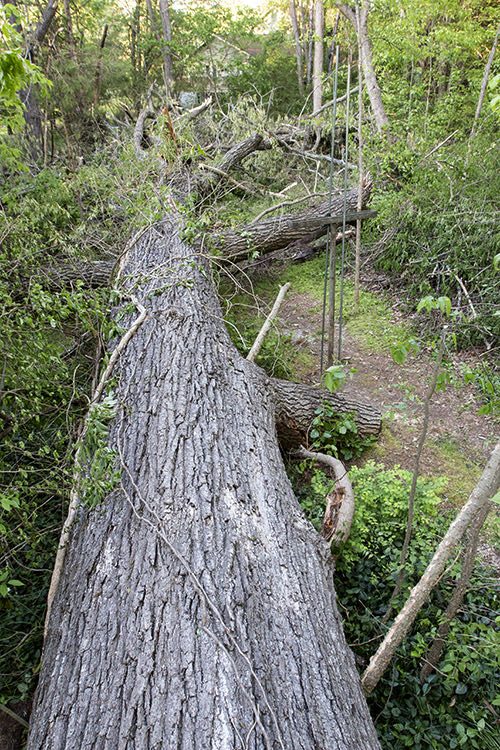
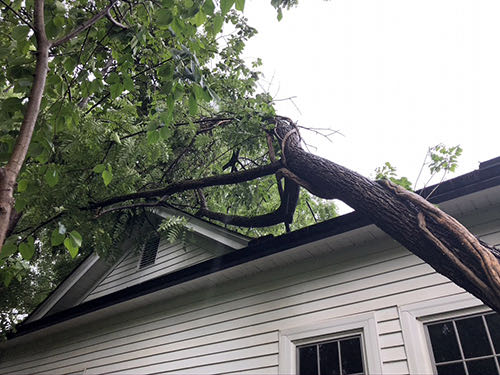
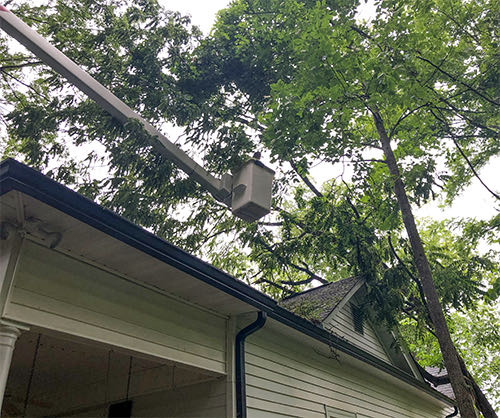
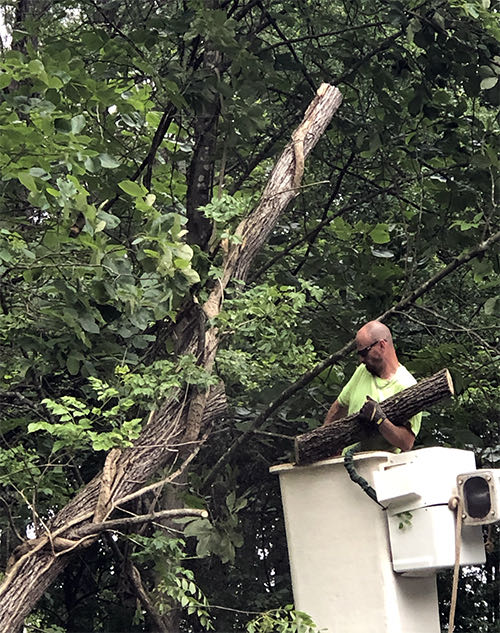

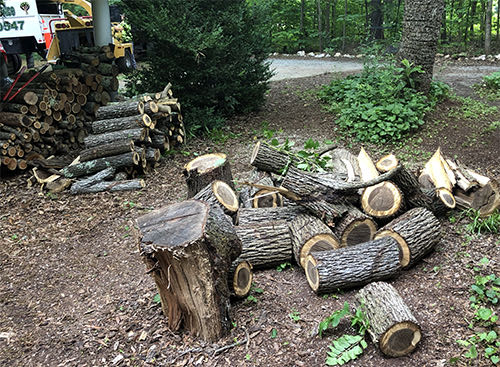

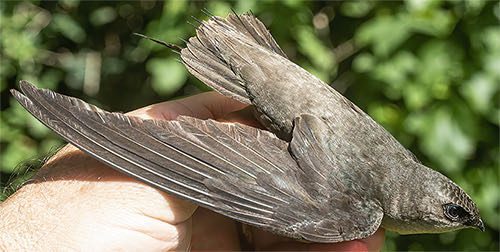
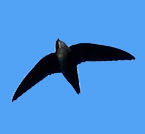 The body is tapered at both ends
The body is tapered at both ends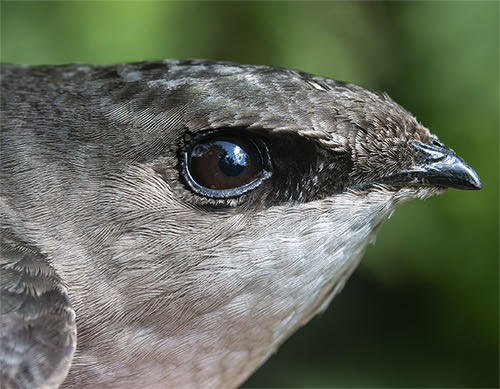
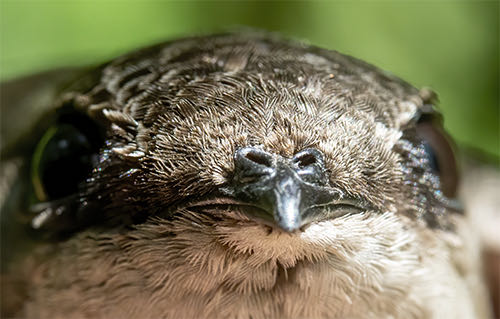

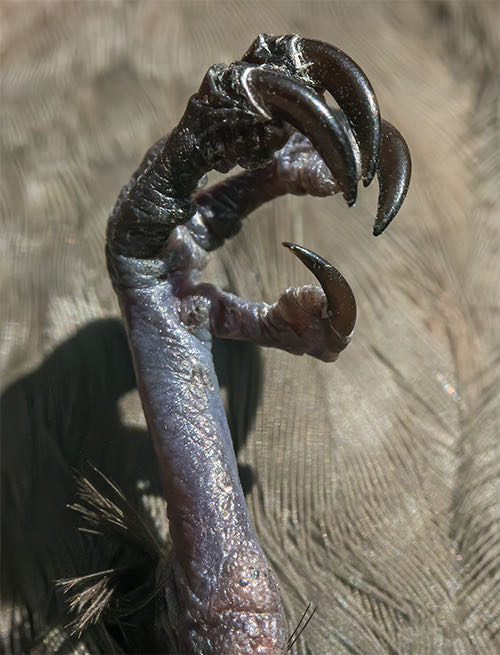
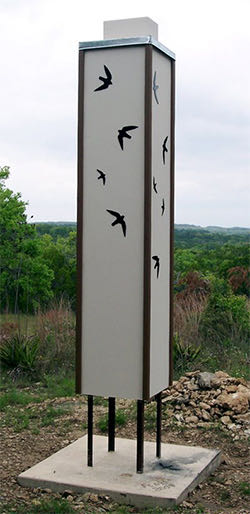 NOTE 1: After mist netting our free-flying Chimney Swift on 25 May, we banded another five days later--but only because it fell down the chimney and was floundering about in the living room. Most homeowners might consider swifts nesting in their flues to be a disadvantage, but banders have a very different perspective. Chalk up this second CHSW as our
NOTE 1: After mist netting our free-flying Chimney Swift on 25 May, we banded another five days later--but only because it fell down the chimney and was floundering about in the living room. Most homeowners might consider swifts nesting in their flues to be a disadvantage, but banders have a very different perspective. Chalk up this second CHSW as our 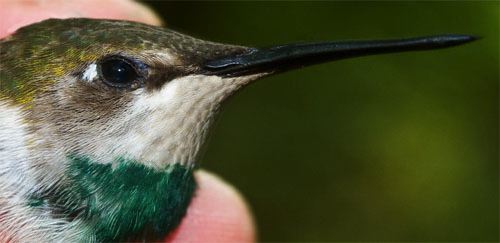

 and destruction of mist nets--PLUS damages from the follow-up mid-May windstorm described above--a Spring Fundraiser we started in April took on new urgency. Unfortunately, the fundraiser ended on 31 May well short of our $7,000 goal.
and destruction of mist nets--PLUS damages from the follow-up mid-May windstorm described above--a Spring Fundraiser we started in April took on new urgency. Unfortunately, the fundraiser ended on 31 May well short of our $7,000 goal.









 Please report your
Please report your